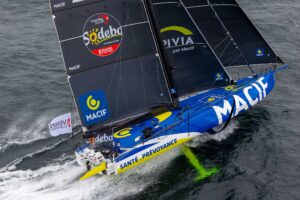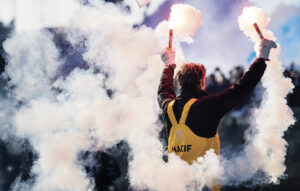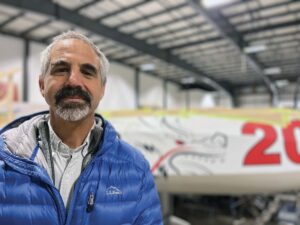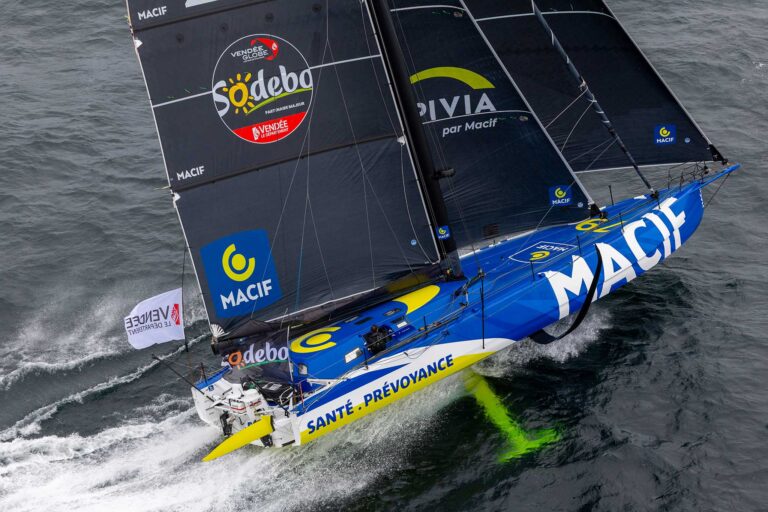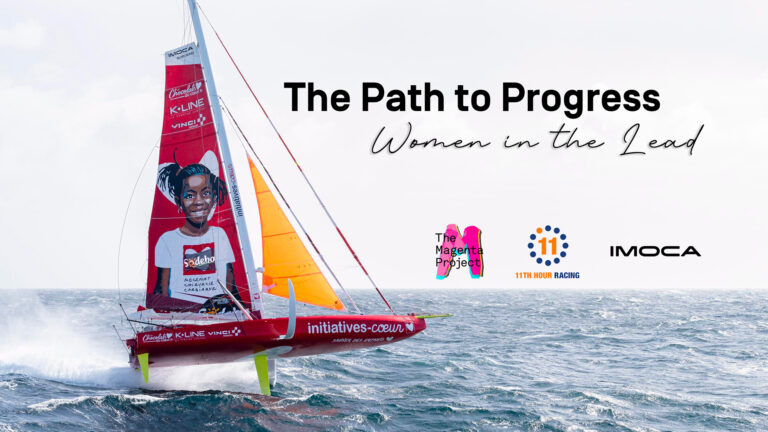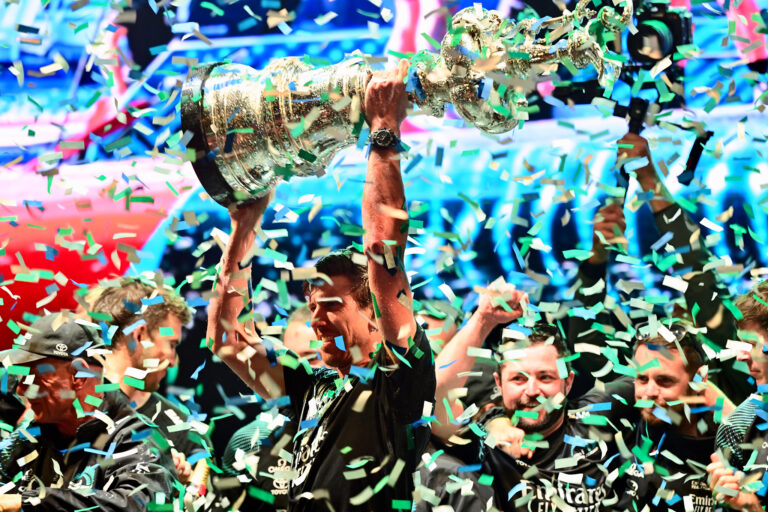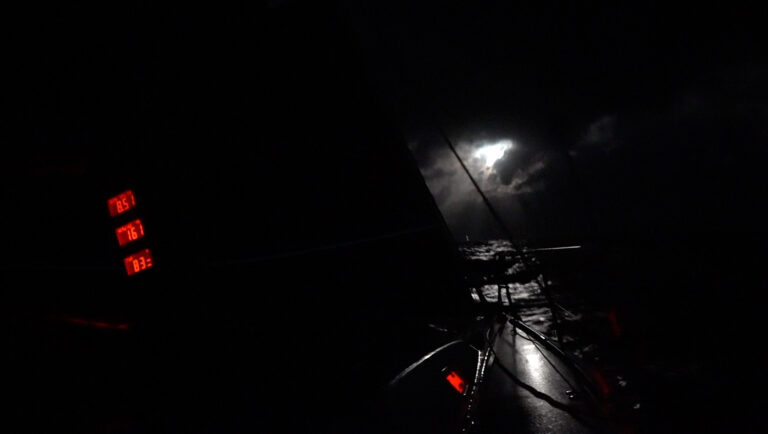
The last America’s Cup was fascinating in large part because of how far it went off script.
Hydrofoiling Cup boats—the biggest technological game-changer of that cycle—were supposed to have been made impossible by the rulemakers. Artemis crewman Andrew “Bart” Simpson” tragically died when his team’s first AC72 capsized and folded in two during a training session. And then, of course, there was “the comeback,” with Oracle Team USA peaking in its development cycle just in time to rebound from an 8-1 deficit against Emirates Team New Zealand to capture a win for the record books.
Four years later, the term “foiling” is firmly lodged into the sailing lexicon, with classes and professional series taking to the air around the world. Beyond that, after progressively shrinking the design envelope the latest generation of America’s Cup Class (ACC) boats to 50ft, and with multiple seasons of racing and training aboard the now-foiling AC45s, this year’s Cup racing will likely be surprisingly similar to the last few races in the 2013 finals.
So what’s different this time around? Everything. It’s just a bit harder to see.
For 2017, both the teams and budgets are smaller in the interest of keeping costs under control. (Oracle Team USA has pegged the basic costs of its ACC at $3 million, in terms of materials and man-hours.) The powerful wings are also built under strict parameters, while the hulls and beams connecting them look nearly identical across the six teams. So it’s essentially only in the foil designs and trimming mechanisms that the boats diverge.
Nonetheless, the resulting web of control systems and power generation—not to mention the foils themselves—has proved to be fertile ground for innovation as the teams strive for a way to make the most of a singular component common to all six campaigns: the human crew. Indeed, if foiling was the catch phrase of the 34th America’s Cup, the development of “hydraulic accumulators,” or the devices used to regulate the hydraulic power generated by each boat’s six sailors, has become the defining technology of today’s Cup cycle.
Human-generated hydraulic power is crucial to sailing an ACC, where it is used for everything from trimming the wing and soft jib to changing the angles of the rudders and daggerboards, to lifting them clear of the water. Equally crucial, there is a limited allowance for the scale of the pressurized hydraulic systems used to power the various rams and winches on each ACC—which in turn, puts a premium on the efficiency of the complex machinery used to store and distribute the energy created by the crews at their grinding handles. Bottom line: no matter how hard they train, the four grinders (the helmsmen and wing trimmers are committed to sailing the boat) simply cannot generate enough energy for the power needs of certain maneuvers. Therefore, wisely husbanding that energy has become a critical part of not just strategy, but also design.
Which is not to say the crews aren’t doing their level best to close the gap. Just the opposite. Ever since the 50ft ACC design was officially voted in by America’s Cup Race Management in 2015, the teams have been focusing on their training, putting in countless hour in the gym. They have also brought in crew and specialists from other endurance sports, like rowing and canoe racing, all in search of a fitness edge.
“When we brought in Ky Hurst, the Olympic distance swimmer, we realized quickly how seriously he takes training,” says Joey Newton, a four-time Cup crew racing with Oracle Team USA. “This was a whole world different than what we did before. Sailing has lagged behind other cardio-based sports.”
“We are introducing deep physiological changes in muscles,” says Peter Cunningham, Team Artemis Racing’s sports science manager and a veteran trainer with the British Olympic team. “We have runners and rowers try out, but they don’t have anything yet because muscles need time to adapt. Our sailors are at a half-million handle revolutions a month.”
Interestingly, while five of the six teams are relying on traditional upper-body grinding systems, Emirates Team New Zealand has continued its long tradition of thinking outside the box (never forget it was the Kiwis who forced the rest of the competition to adopt full-foiling during the last Cup by figuring a way around the impediments put in place by the rulesmakers) by using grinders that look like exercise bikes—thereby capturing of the potential of the body’s much larger leg muscles. Admittedly, the Kiwi “cyclists” are slightly more exposed under sail and may take longer to get on and off their pedestals during maneuvers. But on the face of it, the move seems to make a lot of sense. Whether it’s a winner, only time will tell.

Short Track Racing
Beyond the basic physics of making an ACC boat work, another big difference is that the AC35 racecourse on Bermuda’s Great Sound will look like a short track speed skating oval compared to the drawn-out, three-mile contests that were held on San Francisco Bay.
For example, whereas there was only one upwind leg on the AC34 course, there are now two, roughly doubling the number of laps. In addition, the races will be much shorter, about 20 minutes each—a format arrived at through extensive testing aboard the six teams’ turbo-charged AC45s test platforms.
Of course, more laps also means more maneuvers, which has led to another big development since San Francisco: the evolution of not just upwind foiling, which was just barely achieved by the winning Oracle Team USA squad in 2013, but foiling tacks, so that “dry laps,” in which a boat’s hulls never once touch the water, are now possible. In fact, Oracle Team USA and Team Softbank Japan were the first teams to complete foiling tacks—a maneuver that represents a kind of nexus of the various technological and physiological aspects of AC35 racing—and the performance difference on a given windward leg can mean the gain or loss of hundreds of yards. At press time no team had consistently mastered the maneuver in all conditions. But it was generally agreed that if any team ever did manage to gain a distinct advantage in this area, it could be a deciding factor through the series.
Speaking of advantages, the World Series, though raced in the smaller AC45 class, provided bonus points for the challengers as well as for the Defender, which for the first time in Cup history will be allowed to compete against the challengers during at least a portion of their qualifying series. Land Rover BAR won the overall World Series title and therefore carries two points going into the high-point-scoring regatta. The Defender was second and carries one point.
Equally important, the Defender’s involvement in all but the Challenger Playoffs, or semi-finals, of the Cup qualifiers provides it with what many observers feel is another distinct advantage in that Oracle Team USA will gain an unprecedented look at how its boat and tactics match up against whatever boat will be the ultimate winner—not to mention that much more experience in actual racing conditions.
Beyond that, given the role of muscle power this time around, it should come as no surprise that the average age on a Cup boat has gone down dramatically to somewhere in the late 20s. Similarly, the clean lifestyle needed to compete has nearly wiped out the age-old beer-drinking sailor stereotype, with the teams watching their diets as closely as their exercise regimens. All other things being equal, the strongest, fittest sailor is going to be the one who gets to take part in the actual Cup racing, and the crews all know it.
“On the weekends we go diving and spear fishing, but to be honest I spend a lot of time recovering,” says 25-year-old Oracle Team USA grinder and bowman Louis Sinclair, who is participating in his first America’s Cup. “The days of people going out and drinking are long gone. My younger brother and his friends see me coming home and not drinking and training more, and they know that’s what it takes to be a professional sailor.”
Pity today’s America’s Cup sailors: in many ways what they go through before they even leave the dock makes sailing an old 12-Meter or even a J Class boat look like a walk in the park. (Although you can bet there’s no place else they’d rather be!) Suffice it to say whoever wins this thing will have earned their champagne.
Return to The Overview of the 35th America’s Cup
May 2017




